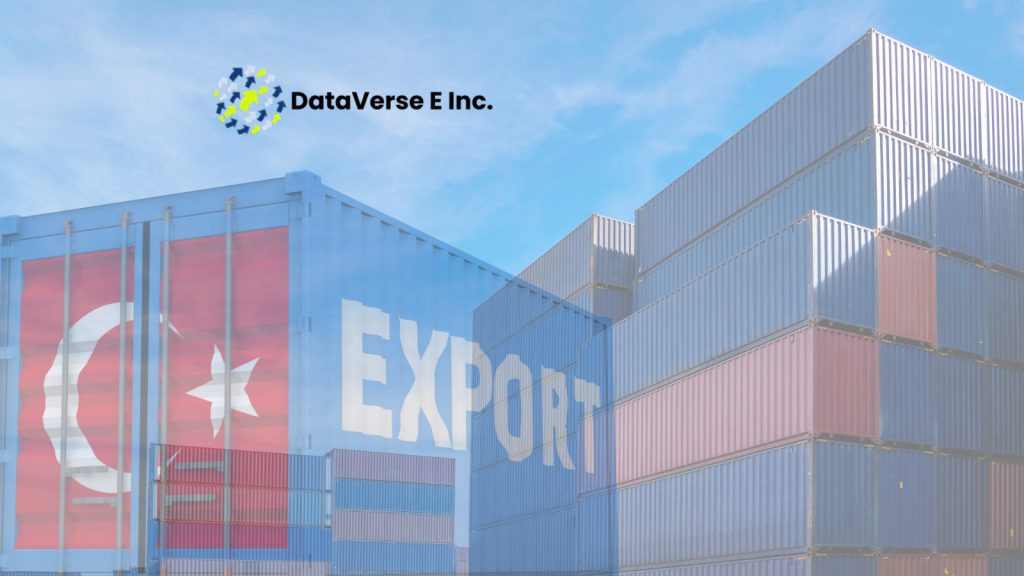Introduction to Blockchain and Cryptocurrency
Blockchain technology serves as the backbone of the digital economy, providing a decentralized ledger that securely records transactions across multiple computers.
This innovative system eliminates the need for a central authority, ensuring enhanced security and trust among participants. The key characteristics of blockchain include decentralization, transparency, and immutability.
Decentralization means that no single entity controls the entire network, making it nearly impossible to manipulate data without consensus from all involved parties.
Transparency allows users to trace all transactions, fostering an environment of accountability.
Immutability refers to the inability to alter or delete previous entries, ensuring that once a transaction is recorded, it remains permanent and can be verified by anyone with access to the blockchain.

Cryptocurrency, a term that frequently accompanies blockchain, refers to digital or virtual currencies that use cryptography for security.
Unlike traditional currencies governed by central banks, cryptocurrencies function on decentralized platforms.
Their primary purpose is to facilitate peer-to-peer transactions without the need for intermediaries, making transactions faster and often less costly.
The use of a digital export currency can streamline cross-border trade, allowing merchants to conduct transactions in a currency specifically designed for the digital landscape.
As the adoption of blockchain technology and cryptocurrencies continues to grow, they are reshaping financial interactions within the global market.
By providing an alternate method for transferring value and recording transactions, these technologies empower businesses to operate more efficiently and transparently.
The rise of digital export currency is particularly noteworthy, as it emphasizes the potential for creating a more accessible and equitable trading environment, thereby transforming the traditional import and export model.
Current Challenges in Import and Export Transactions
Import and export transactions are critical components of global trade. However, businesses engaged in this field face numerous traditional challenges that can complicate operations.
One significant issue is the prevalence of delays, which can occur at multiple stages in the supply chain.
Factors such as customs inspections, logistics bottlenecks, and unforeseen geopolitical events can lead to extended wait times, affecting delivery schedules and inventory management.
In addition to delays, high transaction costs present another barrier in the import-export landscape.
Businesses often encounter various fees related to tariffs, customs duties, and intermediaries that increase the overall cost of transactions.
This financial burden detracts from profitability, particularly for small to medium-sized enterprises seeking to compete in the global marketplace.
Furthermore, the costs associated with traditional banking methods for international transactions often overwhelm the anticipated savings from these exports.
Lack of transparency in import and export dealings can lead to a host of complications.
Businesses often struggle to obtain accurate and timely information about the status of their shipments or the parties involved in the financial transactions.
This obscurity increases the risk of fraud, which can have detrimental effects on both financial stability and reputation in the market. Fraudulent practices, such as invoice manipulation or cargo theft, pose significant threats to legitimate traders, eroding trust within cross-border dealings.
The complexities of cross-border regulations further exacerbate these challenges. Each country has its own customs requirements, tax implications, and compliance procedures, making it arduous for companies to navigate this regulatory landscape.
The inconsistency can slow down processes and lead to fines or penalties when regulations are inadvertently breached.
As the global trade environment continues to evolve, addressing these challenges becomes crucial for enhancing efficiency and competitiveness in international markets.
How Blockchain Enhances Security in Transactions
Blockchain technology significantly enhances the security of import and export transactions through various mechanisms, fundamentally altering the way businesses conduct trade.
One of the most critical features is the use of cryptographic encryption, which secures data at each transactional level.
When a transaction is initiated, it is encrypted into a block and added to the decentralized ledger, thus ensuring that only authorized parties can access or alter the information.
This high level of encryption minimizes the risk of data tampering, which is a prevalent concern in the trading landscape.
In addition to encryption, blockchain employs smart contracts, which are self-executing contracts with the terms of the agreement directly written into code.
These contracts automatically enforce and verify transactions when predefined conditions are met.
For instance, a smart contract could release payment only after the importer’s criteria for the authenticity of goods are satisfied.
This automation not only streamlines the transaction process but also adds an additional layer of security by eliminating human intervention, which is often a point of vulnerability.
Moreover, the immutable nature of blockchain records greatly contributes to preventing fraud and ensuring the authenticity of goods.
Once a transaction is validated and recorded in a block, it cannot be altered or erased without consensus from the network participants.
This characteristic builds a robust audit trail, allowing businesses to trace the lineage of goods back to their origin.
It creates transparency in the supply chain, making it increasingly difficult for counterfeit products to infiltrate legitimate markets.
As a result, companies can engage in international trade with a greater sense of security, reducing risks associated with theft, fraud, and miscommunication.
Increasing Efficiency with Smart Contracts
Smart contracts represent a significant advancement in the realm of blockchain technology, particularly within import and export transactions.
These self-executing contracts are embedded with terms of the agreement directly within the code, effectively automating processes that traditionally relied on intermediaries.
The implementation of smart contracts in international trade can enhance efficiency by enabling a seamless transaction experience.
One of the primary benefits of utilizing smart contracts is the elimination of intermediaries. In conventional systems, third parties such as banks or brokers often facilitate transactions, which can introduce delays and additional costs.
By automating the execution of terms agreed upon in advance, smart contracts minimize the requirement for these intermediaries, allowing parties to interact directly.
This direct engagement significantly decreases the processing times associated with import and export transactions.
Furthermore, smart contracts bolster transparency and trust among participants in a transaction.
Each party has access to the same information on the blockchain, ensuring that all actions are verifiable and immutable.
This transparency is crucial in international trade, where parties may come from different jurisdictions with varying regulations.
The automated nature of smart contracts reduces the potential for disputes over payment terms or shipping conditions by ensuring that conditions are met before any funds are released.
As a result, businesses can handle their digital export currency transactions with a higher degree of confidence.
Ultimately, the integration of smart contracts into the import and export process translates into significant cost savings.
By streamlining transactions and reducing the need for administrative overhead associated with traditional payment methods, companies can redirect resources towards growth and innovation.
Adopting this technology not only improves operational efficiency but positions businesses to thrive in an increasingly competitive global market.
Cryptocurrency as a Payment Method in International Trade
In recent years, the emergence of cryptocurrency has introduced innovative payment methods in international trade, significantly transforming the dynamics of import and export transactions.
Digital export currency, such as Bitcoin and Ethereum, offers several advantages that can enhance efficiencies within global supply chains. One notable benefit is the reduction of transaction fees.
In traditional banking systems, international transfers often incur high costs due to intermediaries and currency conversion fees.
Cryptocurrency transactions, on the other hand, typically involve lower fees as they eliminate the need for banks and other financial institutions, facilitating direct peer-to-peer payments.
Another prominent advantage of using digital export currency is the speed of transactions.
Traditional cross-border payments can take several days to clear, especially when dealing with different currencies.
With cryptocurrencies, transactions are executed almost instantaneously, allowing businesses to receive payments faster and streamline operations.
This increased efficiency can be particularly beneficial in industries where timing is critical, such as commodities trading and e-commerce.
However, despite these benefits, the adoption of cryptocurrency as a payment method in international trade is accompanied by challenges.
One significant concern is the volatility associated with digital currencies; their values can fluctuate dramatically within short periods.
This unpredictability may pose risks for businesses that rely on stable pricing for their products and services.
Additionally, the regulatory landscape surrounding cryptocurrency remains uncertain in many regions, with various countries implementing different regulations impacting their use in trade.
This lack of regulatory clarity can create apprehension among businesses considering the adoption of digital export currency as a legitimate payment method.
Balancing these advantages and challenges is vital for businesses looking to harness the potential of cryptocurrency in international trade.
While the benefits of lower fees and faster transactions are compelling, organizations must also navigate the risks of volatility and regulatory compliance to effectively integrate digital currencies into their trade practices.
Case Studies: Successful Implementation of Blockchain in Trade
In recent years, several companies have recognized the potential of blockchain technology to revolutionize their import and export transactions.
These case studies illustrate how businesses have successfully integrated blockchain into their operations, addressing various challenges while reaping significant benefits.
One notable example is Maersk, the world’s largest shipping company, which has collaborated with IBM to develop TradeLens, a blockchain-based platform aimed at enhancing the global supply chain.
TradeLens allows participants to share real-time shipment information securely and transparently.
By adopting digital export currency concepts, Maersk and its partners have streamlined operations that previously relied on paper documentation.
This innovation not only reduces the time required for customs clearance but also mitigates the risk of fraud and errors.
Another significant case is De Beers, a diamond company that has implemented blockchain to ensure the ethical sourcing of diamonds.
By utilizing blockchain, De Beers has created a tamper-proof record of each diamond’s journey from mine to market.
The incorporation of digital export currency practices enables companies to verify the authenticity of their products while providing consumers with the assurance of ethical origins.
This enhanced transparency has minimized supply chain disruptions and fostered trust among stakeholders.
A final example is the collaboration between Walmart and IBM, where they launched a blockchain initiative for tracking food products.
By leveraging blockchain technology, Walmart has achieved rapid traceability of food items, ensuring quick responses to food safety issues.
This real-time data access allows Walmart to manage its supply chains more efficiently, ultimately leading to reduced waste and improved consumer safety.
The integration of digital export currency standards within this platform has further enhanced its operational effectiveness.
These case studies collectively showcase the transformative potential of blockchain in improving import and export transactions.
By overcoming challenges through innovative solutions, these companies have set a benchmark for others to follow in their pursuit of efficiency and trust in international trade.
Future Trends in Blockchain and Cryptocurrency for Import and Export
The future of blockchain and cryptocurrency, particularly in the context of import and export transactions, presents an array of exciting possibilities.
As technology continues to evolve, the integration of artificial intelligence (AI) with blockchain could significantly enhance the efficiency and security of these transactions.
AI can automate processes, streamline operations, and improve decision-making by analyzing vast amounts of data in real-time.
This synergy can facilitate faster responses to market changes and reduce the risk of fraud, further establishing digital export currencies as a reliable medium in international trade.
Another critical trend is the advancement of regulatory frameworks surrounding both blockchain and digital currencies.
Governments worldwide are beginning to recognize the importance of creating guidelines that cater to the unique aspects of blockchain technology and cryptocurrency transactions.
Enhanced regulations can help mitigate risks associated with money laundering and fraud, while also providing a safeguard for businesses and consumers involved in import and export activities.
As these frameworks develop, they can foster a more positive regulatory environment, encouraging wider adoption of digital currencies among institutions and enterprises engaged in global trade.
The increasing acceptance of digital export currency by governmental bodies and financial institutions represents a significant shift in the landscape of international transactions.
With central banks exploring the issuance of central bank digital currencies (CBDCs), businesses may find more pathways for seamless international transactions.
The interoperability between blockchain platforms and traditional financial systems will likely improve, allowing for real-time currency conversions, reduction in transaction costs, and enhanced transparency.
This evolution could revolutionize the import and export sector, simplifying processes and providing speedier access to necessary funds.
As we look ahead, these emerging trends suggest a future where blockchain and cryptocurrency redefine the import and export landscape, promoting greater efficiency, security, and accessibility in international trade.
Challenges and Limitations of Blockchain in Trade
Despite the transformative potential of blockchain technology in revolutionizing import and export transactions, several challenges and limitations must be addressed for widespread adoption.
One primary concern is scalability. As transaction volumes increase, existing blockchain networks often struggle to process numerous transactions quickly and efficiently.
This limitation could hinder the seamless operation of international trade, where time-sensitive transactions are commonplace.
Interoperability represents another significant challenge.
With various blockchain platforms and systems being developed by different stakeholders, ensuring compatibility among these disparate systems is essential for creating a unified ecosystem.
Lack of interoperability may lead to inefficiencies and barriers in data sharing, impeding the collaborative efforts required for a smooth trading process.
Regulatory hurdles also play a crucial role in the adoption of blockchain technology within trade.
Governments and regulatory bodies around the world are still grappling with how to integrate this technology into existing legal frameworks.
The absence of clear regulations can deter businesses from fully embracing a digital export currency or blockchain-driven solutions, as transaction legality and compliance come into question.
Furthermore, the need for industry-wide standards cannot be overstated.
Without a common set of protocols and practices, blockchain applications in import and export transactions may vary significantly across industries and regions, leading to fragmentation and inconsistent user experiences.
Establishing standards would not only facilitate interoperability but also foster trust and accountability among stakeholders.
To overcome these challenges, further research and collaboration among businesses, regulators, and technology developers are necessary.
By exploring innovative solutions and fostering an environment conducive to ongoing dialogue, stakeholders can work towards creating a more efficient and robust framework for utilizing blockchain in international trade.
Conclusion: The Future of Global Trade
The landscape of global trade is undergoing a significant transformation, largely driven by advancements in blockchain technology and the rise of cryptocurrency.
The discussion in this blog post has highlighted how these innovations can impact import and export transactions, enhancing transparency, efficiency, and security in international trade.
By decentralizing transactions, blockchain reduces the potential for fraud while simultaneously streamlining processes, making it easier for businesses to engage in cross-border exchanges.
Furthermore, the introduction of digital export currency has the potential to revolutionize payment systems.
These currencies can mitigate currency exchange risks and reduce transaction fees, providing businesses with more predictable outcomes for their international sales.
By adopting these digital assets, firms can navigate the complexities of global markets more effectively, positioning themselves to seize emerging opportunities.
The embrace of cryptocurrency in trade not only facilitates quicker transactions but also enables real-time financial reporting, which can lead to better decision-making and strategic planning.
However, with these advancements comes the necessity for adaptation. Businesses must stay informed about the evolving regulatory landscapes surrounding blockchain and cryptocurrencies.
As global trade becomes increasingly digital, those who do not evolve with these changing trends risk falling behind. Thus, the ability to harness the benefits of digital export currency and blockchain technology may very well become a key competitive differentiator in global commerce.
In conclusion, businesses that proactively engage with blockchain and cryptocurrency stand to gain a significant edge in the international marketplace.
By leveraging these tools, companies can enhance their operational efficiency and create more resilient trading practices, ultimately reshaping the future of global trade.
The integration of such technologies will not only facilitate the movement of goods but also foster innovation, setting the stage for a new era of trade practices that could redefine the global economic landscape.






No comment yet, add your voice below!